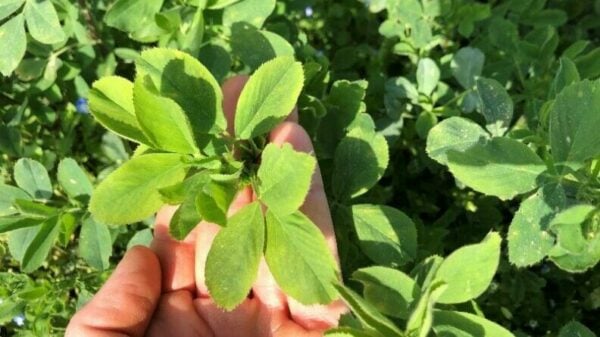Growing Alfalfa
crop nutrition advice
Everything you need to know about alfalfa fertilization, best practice, suitable products, field trials and more.
Advice for growing Alfalfa (Medicago sativa)
-
Alfalfa is grown across the world, in rain-fed and irrigated farming systems, in all types of soils, from tropical acidic soils with pH levels around 5-6, to calcareous soils with pH up to 8.5.
-
Alfalfa is an all-year round crop, normally extending its crop cycle over 3 or 4 growing seasons.
-
Good soil drainage is essential to grow alfalfa. Farm management, especially mowing and other machinery operations, need to be wisely planned to reduce soil compaction.
-
Alfalfa is a key part of crop rotation, especially in organic farming systems, as it helps to improve soil fertility. On the one hand, deep rooting system (long tap root) of alfalfa allows exploration and nutrient cycling of deeper layers of soil into the farming system; and the other hand, through N fixation, occurring by the symbiosis with Rhizobium, at the root zone.
-
The fertilization plan and management need to take into account Rhizobium’s physiology and nutrient requirements.
-
Calcium improves nodulation of Rhizobium and sulphur supply is essential for effective N fixation.
-
Lime amendments in acidic soil should be considered as preparation before sowing alfalfa.

Alfalfa just mowed, drying out in the field before collection

Alfalfa few days after mowing, drying out in the field before collection
Estimated nutrient uptake (kg/t):
Nutrient requirements
| N | P2O5 | K2O | MgO | SO3 | CaO | |
|---|---|---|---|---|---|---|
| Aboveground | 26 | 6 | 25 | 3.8 | 6.5 | 14 |
Dynamic of nutrient uptake over a crop season in alfalfa
Crop nutrient requirements and the dynamics need to be considered when setting up the fertilization plan. Nutrient uptake in alfalfa occurs during the growing season, in several waves during between cuts. Fertilizers with prolonged availability such as Polysulphate, are of high value in this case.
N uptake does not need to be considered in the fertilization, plan, as alfalfa uptakes its N from the atmosphere, through the symbiosis with Rhizobium at the root zone. However, nutrient availability will determine the effective nodulation and N fixation by the Rhizobium and, hence, it needs to be considered. Depending on the environmental and soil conditions, nutrients may be limited at different moments of the growing season. For example, sulphur may be limited early in the season, due to leaching of sulphate beyond the rooting zone during the winter period.
Other nutrients, such as potassium, may be more limiting later in the season as the crop uptakes the soil reserves.
The total quantity of nutrient taken up by the crop depends on the number of cuts that the farming system allows and its productivity. Productivity is higher during the second and third year, with over 20 tons of dry matter in irrigated alfalfa of southern locations.
Role of nutrients
| Key parameter | N | P2O5 | K2O | MgO | SO3 | CaO |
|---|---|---|---|---|---|---|
| Rhizobacteria nodulation | ++ | ++ | + | + | ++ | |
| N fixation | ++ | ++ | + | ++ | + | |
| Growth and branching | ++ | + | + | ++ | + | |
| Plant development (flowering) | ++ | + | + | + | + | |
| Drought resistance | + | ++ | ++ | + | + | |
| Dry matter production, and protein content | + | + | ++ | + | + | |
| Digestibility | + | +/- | +/- | ++ | + | |
| Winter resilience and stand longevity | ++ | + | + | ++ | + |
Source: Different sources and references in the literature
Nutrient deficiencies

Alfalfa plant on the right shows shorter leaves and reduced branching due to phosphorous deficient in comparison to a well-nourished plant. Source, Lissbrant et al., Purdue University Extension
Alfalfa crop showing some early symptoms of combined nutrient deficiencies, of potassium, sulphur and magnesium (irrigated alfalfa in north-east Spain)











